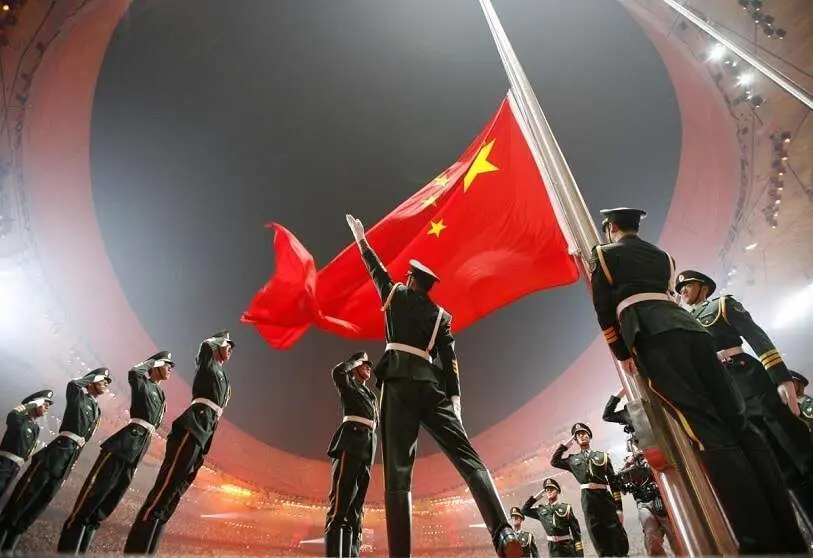China's spy satellites also watch and listen to everything that happens in Ukraine

The standoff in the Ukrainian plains between Vladimir Putin's Russian ground and air forces and Volodymir Zelenski's defence units has forced Xi Jinping's China to practise a delicate balancing act between the two warring parties, albeit one much more attuned to Russia than to Ukraine.
As privileged onlookers, Beijing's political and military authorities observe and listen in as much detail as possible to what is happening in the Eastern European theatre of operations. Among the main sources from which they gather information is their huge fleet of spy satellites, estimated by US intelligence services to number close to a hundred platforms.
All of them form a caravan of satellites that continuously and in different orbital planes fly over the hotspots where the Chinese authorities need to collect images, data and information, as well as detect and capture electromagnetic emissions. In the latter case, their targets are radars, microwave communication links and mobile communications, for example from operators such as Iridium, Thuraya and Inmarsat.

Chinese military technicians receive the images and signals from their satellites, process them, analysts from the General Staff's Technical Surveillance department extract the information they contain and pass the intelligence report on to the defence minister, General Wei Fenghe, 68, a trained artilleryman, who has been in office since mid-March 2018.
They also forward the results of their analysis to the Ministry of Foreign Affairs, which since March 2013 has been headed by the diplomat Wang Yi, who is about 69 years old. Of course, a summary is also sent to President Xi Jinping's military and political cabinets. As to whether Beijing provides information to the Russian Defence Ministry, nothing is known, but it is not likely for the time being.

In the eyes of national and international public opinion, all of Beijing's spy satellites have been given the name Yaogan Weixing, which in Mandarin means remote sensing satellite.
The official information provided by the China Aerospace Science and Technology Corporation (CASC) is that these satellites are dedicated to urban planning, natural disaster prevention and crop yield estimation. But these are very complementary and marginal functions.

The reality is that they are all under the control of the Ministry of Defence and under the generic name of Yaogan Weixing we can find very different spy satellites: some are radar technology, others are electro-optical satellites operating in the visible and infrared spectra, and many more are signals intelligence or SIGINT devices, which are launched into space in groups of three. Both are shrouded in a curtain of opacity.
With such a variety and number of platforms in orbit, China is continuously replenishing and reinforcing its large military constellation. It has just done so with the launch into orbit of its sixth satellite this year. It is the new reconnaissance satellite Yaogan-30-02, which took off from the Jiuquan base in the Gobi desert in northern China on 17 March using a Long March 4C launcher.

As the Pentagon does with its US counterparts, the above data are the only ones Beijing releases. The rest is top secret and nothing is known about its characteristics. But it is known that Yaogan-30-02 is an electro-optical spy satellite and that it has been placed at an altitude of 1,100 kilometres, the same as its twin Yaogan-34-01, in orbit since 30 April 2021, with which it operates in a network.
The research and development centre dedicated to the manufacture of the Yaogan with high-resolution optical technology is the China Academy of Space Technology (CAST), based in Beijing. The institution specialising in synthetic aperture radar (SAR) technology is the Shanghai-based Spaceflight Academy of Technology (SAST).

China's pace of spy satellite launches is frenetic, much faster than that of the United States. In 2021, it launched 22 reconnaissance satellites, including 18 electronic listening devices and four observation satellites. In contrast, the Pentagon only records putting four spy platforms into orbit, three electronic listening and one electro-optical.

The China National Space Administration (CNSA), headed by Professor Zhang Kejian, plans to carry out more than 50 launches by 2022 to place at least 140 satellites, probes and space structures into orbit. This includes an unknown number of spy missions and six missions to complete Tiangong, China's three-astronaut manned orbital complex, which has already been opened to international cooperation.











